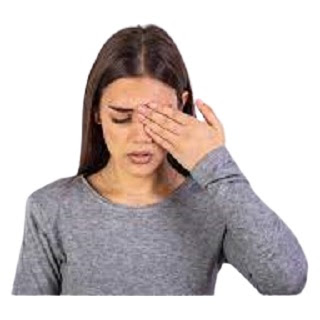Binocular
Vision Dysfunction (BVD) is a condition that affects many individuals without
them even realizing it. This often-overlooked eye problem can lead to various
vision-related issues, affecting one's overall quality of life. In this blog
post, we will explore the world of BVD, shedding light on its causes, symptoms,
and available treatment options.
What is Binocular Vision Dysfunction?
Subheading: Defining BVD
Binocular
Vision Dysfunction is a visual disorder where the two eyes do not work together
efficiently. Instead of working as a team, they may have trouble aligning
properly, leading to a range of vision problems.
Causes of Binocular Vision Dysfunction
The Culprits Behind BVD
- Muscle Imbalance: BVD can often
be traced back to an imbalance in the muscles that control eye movement.
This can result from various factors, such as genetics or head trauma.
- Refractive Errors: Conditions
like nearsightedness or farsightedness can contribute to BVD, as they
affect how the eyes focus on objects.
- Convergence Insufficiency: When
the eyes struggle to converge on a near object, it can lead to BVD. This
is a common cause, especially among children.
Signs and Symptoms of BVD
Recognizing the Red Flags
- Double Vision: Seeing two
images of a single object is a classic symptom of BVD. This can be
particularly bothersome and may affect activities like reading or driving.
- Eye Strain and Fatigue:
Individuals with BVD often experience eye strain, especially after
extended periods of reading or computer use.
- Headaches: Frequent headaches,
particularly around the eyes or temples, can be a sign of BVD.
- Difficulty with Depth Perception:
BVD can impair your ability to judge distances accurately, potentially
leading to clumsiness or misjudging objects' positions.
Diagnosing Binocular Vision Dysfunction
Getting a Diagnosis
- Comprehensive Eye Exam: An eye
care specialist can diagnose BVD through a thorough eye examination,
including tests to assess eye alignment and movement.
- Symptom Assessment: Discussing
your symptoms, such as double vision or headaches, with an eye doctor is
crucial for an accurate diagnosis.
Treatment Options
Correcting BVD
- Vision Therapy: Vision therapy
exercises can help strengthen eye muscles and improve coordination. A
trained therapist will guide you through a personalized program.
- Prism Lenses: Specialized
eyeglass lenses with prisms can help align the eyes correctly, reducing
double vision and eye strain.
- Corrective Lenses: If
refractive errors contribute to BVD, prescription glasses or contact
lenses may be prescribed.
- Surgery: In severe cases,
surgery may be necessary to correct eye muscle imbalances.
Conclusion
Binocular Vision Dysfunction is a common yet often overlooked vision problem that can significantly impact one's daily life. Recognizing the signs and symptoms is the first step towards seeking proper diagnosis and treatment. If you suspect you or a loved one may have BVD, don't hesitate to consult with an eye care professional. With the right treatment, you can regain comfortable, clear, and efficient vision.
You may like;


